What Are Sustainable Transportation Options in Georgia?
A Practical Guide for Georgia
.jpg)
How Does Transportation Produce Emissions?
Read more about the sources of greenhouse gas emissions connected to transportation in Georgia.
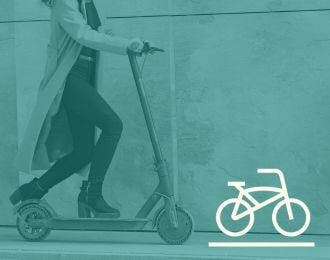
What Does Sustainable Transportation Look Like in Georgia?
Learn about the transportation methods that produce fewer emissions and the impact that small changes can have.
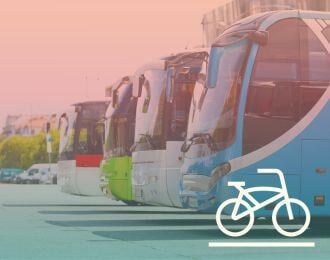
What Transportation Alternatives Exist In Georgia?
There are so many ways besides driving to get where you need to go in our state, even in rural areas.
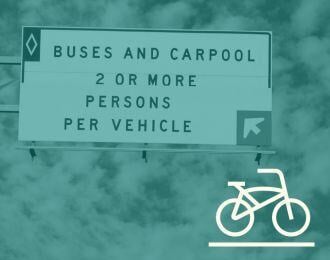
What Commuting Options Can I Try in Georgia?
How can you reduce emissions from your commute without relying on public transportation? Learn about the options here.
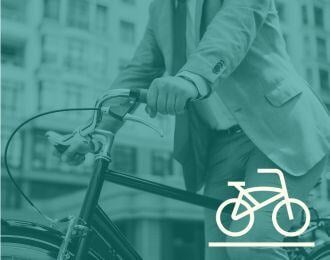
How Do I Commute by Bike in Georgia?
You can commute to work or school in safety and comfort on a bicycle. This advice will help you get where you're going on two wheels.
.jpg)
How Do I Commute by Walking in Georgia?
Walking can be an easy and effective way to get to work if you live close by. These tips will ensure you enjoy your trip.
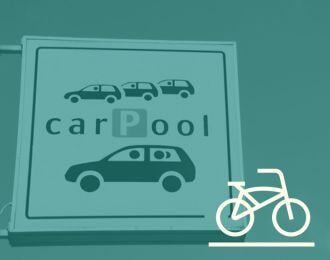
How Do I Carpool Effectively in Georgia?
If your workplace is far from home and mass transit options, carpooling can be a great option. Here’s how to do it.
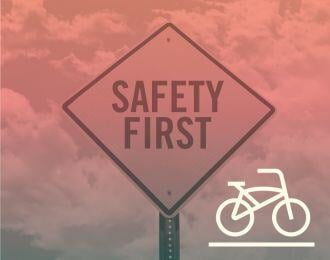
Is Sustainable Transportation Safe?
Safety is key for traveling by bike or on foot. These tips will help ensure you arrive safely at your destination.
.jpg)
How Can I Help Sustainable Transportation Grow?
There are many ways to get involved in expanding sustainable transportation in your community in Georgia. Get inspired here.

Resources for Sustainable Transportation
Interested in learning more? There are many great resources about biking, walking, and mass transit that you can explore.
How does transportation produce emissions?
With the growth of renewable energy and a transition away from the most carbon-intensive fuels for electricity generation, transportation has eclipsed the electricity sector as Georgia’s number one source for greenhouse gas emissions. For 2023, transportation accounted for 60 million metric tons of CO2-equivalent emissions entering our atmosphere - nearly one-third of the total 92.5M metric tons in all sectors.
That’s not surprising, considering our state has nearly 90,000 miles of roads and almost 8.5 million registered light-duty cars and trucks that burn gasoline or diesel fuel. Tailpipe exhaust from those vehicles includes not only the GHGs that contribute to climate change, but also criteria pollutants like nitrogen dioxide and sulfur dioxide that harm human health and cause smog and other environmental issues.

What Does Sustainable Transportation Look Like in Georgia?
Transportation doesn’t have to be a dirty word! Getting around your community can be carbon-neutral, healthy, and joyful for people AND planet.
A 2021 study by the US Department of Energy found that 52% of all trips nationwide were less than three miles, and 28% were less than one mile, making walking and bicycling realistic – and often favorable – “alternatives” to driving a car for most trips. Drawdown Georgia researchers estimate that walking, bicycling, and telework can save 1 Megaton (Mt) of greenhouse gas emissions by 2030 if we reduce vehicle miles traveled by just 2.5%.
Drawdown Georgia is not alone in recognizing the critical role that walking and biking must play in climate action. In separate Priority Climate Action Plans, both the Georgia Environmental Protection Division (EPD) and the Atlanta Regional Commission (ARC) identified efforts to increase walking and, especially, bicycling as key greenhouse gas-reduction measures.
Whether it takes the form of “fixed-route” city bus and train systems or through “demand-response” services typically found in rural areas, public transportation serves employment, education, healthcare, shopping, and recreational destinations all over Georgia. In addition to being climate-friendly (more people in fewer vehicles equals a win for greenhouse gas emission reductions), transit makes our communities accessible to seniors, children, people with disabilities, and anyone else who doesn’t drive a car.
Because they have no tailpipe emissions, all-electric vehicles driven in Georgia produce 80% fewer greenhouse gas emissions than a gasoline car or truck. That figure is not 100% because, even though our state’s electricity grid is getting cleaner every day, there are still greenhouse gas emissions associated with generating electricity for charging EVs. For that reason, and also because the transition to fully electric cars and trucks will take decades to complete, we must rely on more than just electrification to accomplish Drawdown Georgia’s carbon reduction objectives.

What Transportation Alternatives Exist In Georgia?
Some people may think of bicycling, walking, public transit, and other active, non-polluting ways to get around as “alternative” transportation, but they are the go-to means of daily travel for many Georgians. People with the luxury of choice find active transportation to be a fun and invigorating way to commute, shop, or access healthcare while making sustainable choices, whether or not they still drive regularly for other trips.
However, many others - because of economics, ability, or another factor - must rely on these modes of transport no matter the weather, topography, or, unfortunately, safety and convenience characteristics of their community. Regardless of why we ride bikes, walk, use a mobility device, or take the bus, it’s clear that Georgia and Georgians rely on active, sustainable transportation as a key part of our lives - there’s nothing alternative about that!
In cities across Georgia, you’re likely to find at least some degree of pedestrian infrastructure that would allow you to walk or use a wheelchair relatively safely in certain neighborhoods, but connectivity of safe sidewalks and crosswalks may not be comprehensive.* On-street bike lanes, shared-use paths like greenways, and slower streets are great places to ride bicycles, scooters, or similar vehicles in town. Most larger cities in Georgia have public transit systems, although wait times and convenience of access may vary according to location.
There are also public transportation services in most of Georgia’s rural counties, where you can call in your trip details ahead of time and ride to your destination. In these parts of the state, sidewalks and bike lanes are far less common, but more and more rural counties are embracing multi-use trails in their local plans to improve local infrastructure and connectivity.
[*Riding a bike on the sidewalk is illegal for everyone over the age of 12 statewide, and for people 12 and under where their local jurisdiction has not specifically enacted an ordinance permitting them to ride on sidewalks.]
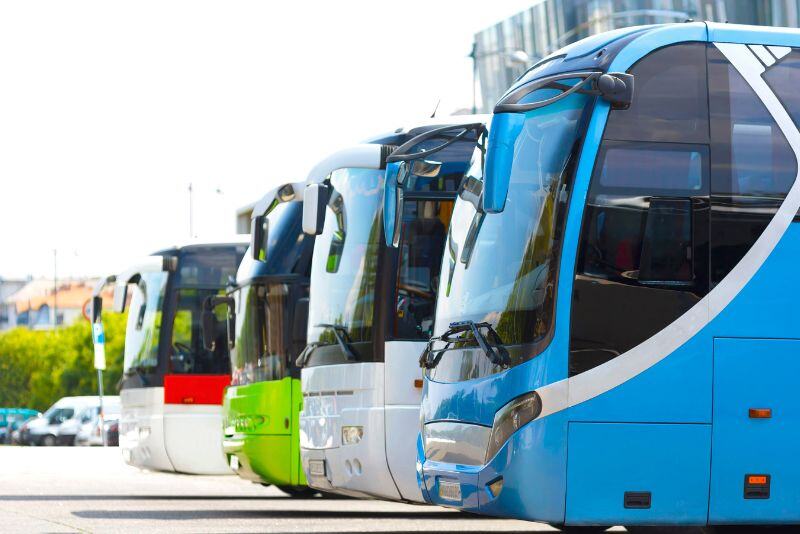
What Commuting Options Can I Try in Georgia?
Aside from public transit (bus, rail, and other similar systems), Georgians make regular use of active forms of sustainable transportation, as well as ridesharing, carpooling, and telecommuting. People ride bicycles, walk, and use wheelchairs and other assistive devices for transportation all over the state. Except for people who drive to a park-and-ride facility, every trip on transit also begins and ends with active, sustainable transportation. Mixing modes is a convenient and efficient way to get around!
While telecommuting (working remotely from home) and carpooling may occur more commonly in urbanized areas than in the more rural parts of the state, they can be done anywhere people live and work near each other. As an alternative to full-time telecommuting, some people work a flex-time schedule that allows them to be at home some days while going to their office other days; this reduces emissions somewhat, but not as much as a full week of remote work and/or sustainable transportation.

How Do I Commute by Bike in Georgia?
Clearly, the first thing you’ll need is a bike! The best bike for commuting is the one that you already have, but if you need a bike, there are lots of great options out there. Some bikes — like folding bikes, cargo bikes, or touring bikes — will have features that might make your commute easier.
Look for the features that are the most important to you on a new (or new-to-you) bike. Mountain bikes are designed to handle varied terrain and have a slightly more comfortable, upright riding position. Road bikes may be more efficient for longer commutes, but feature skinnier tires and often afford less relaxed body positions. A good compromise between mountain bike capability and road bike efficiency is a gravel bike, which features wider tires, and often includes mounting options for racks and bags; “hybrid” bikes fill a similar role between mountain and road.
Once you’ve got your bike, you’ll need a way to carry your gear, especially if you expect to change into work clothes at the office. An easy way to do this is to drive, ride the bus, or carpool on Mondays and Fridays to bring your work clothes and materials for the week.
If you’re committed to carrying what you need, and your bike has mounts to accept one, a rack with bags, or “panniers,” is the easiest way to carry your items. There are even special garment bags designed to carry suits. Of course, you can always wear a backpack and keep things simple, but bear in mind that a backpack can make hot days feel even hotter.

How Do I Commute by Walking in Georgia?
If you live close enough to work that walking is an option, then this may be the easiest way to try sustainable commuting — all you need are your shoes and a decent route!
Of course, even walking to work requires a bit of preparation. You may not want to wear your dress shoes to walk for any considerable distance. Instead, try wearing comfortable shoes to walk in and then change into something work-appropriate when you arrive. Just like when you ride your bike, you may want to bring a change of clothes with you.

How Do I Carpool Effectively in Georgia?
With a little advanced planning, carpooling can be an easy, climate-friendly substitute for driving your vehicle solo each day. Organization is key, and these tips can ensure a safe and happy carpool:
- Establish a meeting place at someone’s home or ask permission to park in a public location like a grocery store or other central parking lot.
- Alternatively, set a route by which the driver will pick up other carpool members.
- Develop a rotation of drivers, or, if one person will drive every day, decide how driving expenses will be reimbursed.
- Set expectations ahead of time as far as music, eating/cleanliness, punctuality, distracted driving, etc., making safety your number one priority.

Is Sustainable Transportation Safe?
There are a few safety considerations you should keep in mind before you hop on your bike or hit the sidewalk on the way to work.
Bicycle Safety
The easiest way to be safe when you’re walking or riding is to follow the rules of the road. When you’re on your bike, ride with traffic, not against it. Legally, you are operating a vehicle and must travel in the same direction as the other vehicles on the road - plus, it’s safer!
Riding in the same direction as motor vehicle traffic gives drivers more time to evaluate roadway conditions as they approach you and then complete a safe pass. Of course, you must also obey traffic signals and signs when you’re riding on the road.
Every cyclist should wear a helmet every time they get on a bike (the same applies to scooters, electric unicycles, etc.) and all riders under 16 years of age are required to do so by state law. Proper fit and adjustment is critical, so visit a trusted local bike shop to get the right helmet for you.
If you already own a helmet, make sure that it hasn’t reached the end of its useful life (3-5 years), that it’s properly adjusted (see manufacturer’s guidelines), and that it’s in top condition. Replace it after any crash.
Pedestrian Safety
While walking, use the sidewalk whenever possible. However, if you must walk in the roadway, you typically want to walk against traffic in order to see and respond to approaching vehicles. Take visibility into consideration, though: if you’re approaching a curve or a hill where an oncoming car might not see you, you may need to move to the other side of the road to see and be seen.
Cross at crosswalks whenever possible and always obey posted signs and signals. You may legally cross midblock outside of a crosswalk, but you must yield to vehicles in this situation.
The Importance of Visibility
One of the most important ways to be safe on the road is to be visible! Choose clothes that are easily seen, especially for your morning and evening commutes. Use lights and reflective materials as much as possible and remember, when you’re bicycling at night, you must use a white front light and rear reflector at minimum. Adding a rear red light, especially one that blinks, and other reflective or lighted items to your bicycle, helmet, or clothing, is even better.

How Can I Help Sustainable Transportation Grow?
Joining your local and state advocacy groups is a great first step toward becoming part of the sustainable transportation solution in your community. Go Georgia is your statewide advocacy and education partner, and many Georgia communities have their own organizations that work to expand active transportation locally.
Even if no advocacy group exists in your area, you can still get involved. Begin by attending relevant public meetings (city council/county commission, transportation or bike/walk committee meetings, etc.) and voicing your desire for safe places to bike and walk in your community.
Want to go even further and start your own advocacy group? Contact Go Georgia (formerly Georgia Bikes) for more information and assistance. It often takes only a few committed individuals to make an impact at the local level!

Other Resources
There are plenty of additional resources to help you start your active transportation journey!
Georgia Bicycling Resources
Local organizations often have lists of suggested routes and tips for navigating their communities.
Your local bike shop is another great resource for riding information and all of the commuting supplies that you’ll need.
Of course, Go Georgia's Bicyclist Pocket Guides have all the additional information you need to stay up to date on Georgia’s traffic laws and cycling safety tips.
Parkent is an Atlanta-based manufacturer of universal secure e-bike charging stations, featuring metal bars that lock the bike frame and wheel in place while the bike charges.
Georgia Bicycling + Pedestrian Resources
Some advocacy groups, like Bike Walk Savannah, even offer custom route builder services.
Propel ATL is another pedestrian and bicycle advocacy group that can also connect cyclists with free classes and rebates for e-bikes.
Georgia Commuting Resources
Livable Buckhead offers a wealth of sustainable commuting resources, including tips on teleworking, a commute planner, and information on state and local incentives for commuters who choose sustainable transportation.
Georgia Public Transportation Resources
The Buc is an on-demand, shared transportation service managed by Livable Buckhead
Xpress buses connect outlying Atlanta metro areas with larger transit systems like MARTA
Meet Our Experts
This toolkit was written by the experts at Go Georgia (formerly Georgia Bikes).
John Devine, AICP
Executive Director
Go Georgia


